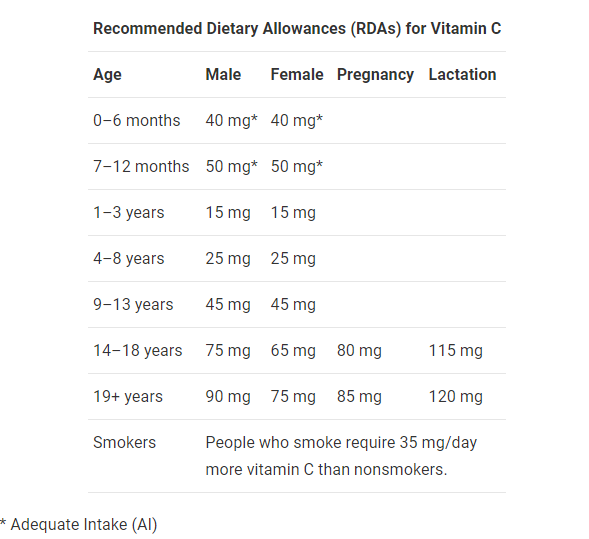How Much Vitamin C Should Every Age, Gender, and Pregnant Woman Consume Daily?

Dietary reference intakes (DRIs), compiled by the Food and Nutrition Board (FNB) under the direction of the Institute of Medicine of the national Academies, contain recommendations for all vitamins, including vitamin C. Dietary Reference Intake (DRI) is the umbrella term for a group of reference values used to evaluate and plan the nutrient intakes of normal or healthy individuals. These vitamin C values may vary by age, gender, or during pregnancy; to comprehend this, we must examine the following terms:
Adequate Intake (AI): When there is insufficient evidence to establish RDA, specialists establish AI. Consumption at this stage is assumed to assure nutritional sufficiency.
Recommended Dietary Allowance (RDA): The average daily intake level sufficient to meet the nutrient needs of nearly all healthy people.
Tolerable Upper Intake Level (UL): The daily intake at which adverse health effects are unlikely.
Estimated Average Requirement (EAR): The average daily intake estimated to meet the needs of 50 percent of healthy individuals. EAR typically evaluates the nutrient intakes of specific populations and plans menus that are nutritionally adequate for these populations.
RDAs for vitamin C are typically based on its known antioxidant and physiological function in white blood cells and are significantly higher than the quantity required to prevent vitamin C deficiency. For infants from birth to 12 months, the Food and Nutrition Board defines an AI for vitamin C equal to the mean vitamin C intake among breastfed infants who are healthy.

